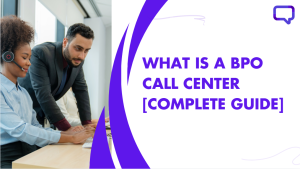Ever wondered why some Shopify stores seem to have it all together? Their secret weapon isn’t just great products but AMAZING customer service. Imagine if every customer felt heard, understood, and valued.
Keeping up with emails, chats, and calls feels overwhelming – especially as your store grows. Trust me, I’ve been there.
But there are a lot of Shopify businesses out there who manage to do this – without making it seem like a chore.
But how?
The secret: Outsourcing Shopify customer service.
Shopify: The eCommerce Giant
Shopify seems to be everywhere in the online shopping world.
Redbull? Shopify.
Sephora? Shopify.
PepsiCo? Shopify.
Even Tesla uses Shopify.
It’s the backbone for countless stores, big and small. Think of it like the Swiss Army knife of eCommerce platforms – easy to use, yet powerful enough to manage and scale any online store.
Its popularity isn’t just by chance; it’s because Shopify makes launching and running an online store as easy as 1 2 3. Check out these advantages of using Shopify for your business.
But back to the topic at hand: Why should you outsource Shopify customer service for your business?

In-House Customer Service: The Challenges
Running an in-house customer service team for your eCommerce business sounds simple.
Spoiler alert: It’s not.
First off, the sheer volume of inquiries can be overwhelming.
Then there’s the challenge of being available 24/7 – because, let’s face it, the internet never sleeps.
And don’t get me started on the variety of queries, from the simple “where’s my order?” to the complex “how does this product work?”
It might be easy to handle the bulk of customer support in-house when you start, but as your store grows and scales, it becomes increasingly chaotic – not to mention EXPENSIVE.
It’s a lot to handle, isn’t it? But…what’s the solution?
How do I Get Started With Outsourcing Shopify Customer Service?
Think about it: Would you rather spend your day answering emails and chat messages or focusing on growing your business?
Shopify customer service outsourcing significantly improves customer satisfaction, saves time, and allows you to scale your business more efficiently. Plus, it lets experts handle the tricky questions, freeing you to focus on what you do best
Getting Started
1. Understand Your Needs
First off, what do you need help with? Is it email support, live chat, social media, or all the above? Knowing your needs helps you find the perfect partner. Ask yourself:
- How many customer inquiries do I get in a day?
- What languages do my customers speak?
- Do I need 24/7 support?
2. Research Your Options
There are plenty of fish in the sea, or in this case, customer service outsourcing companies that specialize in e-commerce, specifically Shopify. Look for companies with great reviews, case studies, and, ideally, experience in your industry. Make a list, check it twice, and start reaching out. Check out the list of top call center outsourcing companies.
3. Evaluate Their Expertise
When you start talking to potential partners, ask about:
- Their experience with Shopify stores.
- The training their agents receive.
- How they handle peak seasons or sales.
- Examples of how they’ve helped similar businesses.
Remember, be transparent and upfront about what you expect. The best call center outsourcing companies are happy to answer any queries or doubts you might have. It’s a good idea to set clear expectations on both ends.
4. Understand the Costs
Costs vary widely. Therefore, it’s important to understand what you’re getting. Some companies charge per ticket, while others might offer a monthly plan based on total volume. Remember, you often get what you pay for: look at the value of high-quality service over just the sticker price.
5. Trial and Error
Many companies offer a trial period. Use it! It’s a fantastic way to see if they’re a good fit without a long-term commitment. Monitor their performance closely. Are they quick? Friendly? Effective? This is your time to be picky.

Outsource Shopify Customer Service: Start for Free
Pre-Sales vs. Post-Sales Support
Navigating the waves of customer support is like trying to find your way through a maze – exciting, a bit challenging, but oh-so rewarding when you find the right path.
Let’s talk about two critical stages in that journey: pre-sales and post-sales support. Why are they important, and how can they transform your customers’ shopping experience?
What’s the Deal with Pre-Sales Support?
Think of pre-sales support as the charming tour guide who greets you at the entrance of a maze. This guide doesn’t just show you around;
They make you want to see more.
They make you feel intrigued.
Pre-sales support is all about engagement and education. It’s about making those potential customers feel like VIPs from the get-go. C’mon, we all love some special treatment.
The Why
- First Impressions Count: This is your chance to dazzle potential customers. Answer their questions, offer solutions, and watch as they move closer to making a purchase.
- Build Trust: Be responsive and helpful with them; before they’ve even spent a penny, they’ll start to trust your brand.
- Personalized Solutions: By understanding your customers’ needs early on, you can offer personalized recommendations, increasing the chances of a sale.
The How
- FAQs are Your Best Friend: A well-organized FAQ section can answer common pre-sales questions, freeing up your support team for more complex inquiries.
- Live Chat for the Win: Offering live chat can significantly increase conversion rates. Customers love instant responses – it makes them feel valued and supported.
And Then There’s Post-Sales Support…
Now, imagine you’ve made it through the maze, and there’s someone there to celebrate your success, help you understand your new purchase, and ensure you’re delighted with your experience. That’s post-sales support in a nutshell—it’s about making sure customers are happy, satisfied, and ready to come back for more.
The Why
Customer Retention: It’s not just about making a sale; it’s about keeping those customers coming back. Excellent post-sales support ensures customers feel supported long after they’ve checked out.
Feedback Loop: Post-sales interactions are a goldmine for feedback. Use this to improve your products, services, and customer experience.
Word-of-Mouth: Happy customers are your best marketers. They’re likely to tell their friends if they have a great post-sales experience.
The How
Follow-Up Emails: A simple “Thank you” email can go a long way. Include contact information for support and ask for feedback.
Loyalty Programs: Reward repeat customers with discounts or special offers. It’s a great way to show appreciation and encourage more purchases.
Accessible Support: Make sure customers can easily get in touch if they have questions or issues post-purchase. Transparency and accessibility are key.
Why Outsource Both Pre and Post-Sales Support?
Outsourcing customer support for your Shopify store can be like having a team of expert guides for every customer journey stage. Here’s why you might want to consider it:
Expertise on Demand: Get access to a team of professionals trained in the art of customer satisfaction.
Scalability: Whether it’s the holiday rush or a surprise sale, an outsourced team can adjust quickly to handle increased volume.
Cost-Effective: Outsourcing can be more cost-effective than maintaining an in-house team, especially considering the breadth of coverage and expertise offered.
Real Talk: The Benefits Are Real
Imagine your store surviving and thriving, with a steady stream of happy customers singing your praises. With dedicated teams handling pre and post-sales support, you’re not just selling products but creating an experience that customers won’t forget.

Outsourcing Shopify Customer Support in 8 Easy Steps
Shopify customer support outsourcing for your store doesn’t have to be a convoluted process. With the right steps, it can be more like a straight line to success!
Let’s break down the process into manageable, bite-sized pieces, shall we?
Step 1: Define Your Needs
What’s the game plan? Take a moment to figure out what you really need. Are we talking 24/7 chat support, handling returns and exchanges, or maybe managing those “pesky” but important emails? Understanding your needs is crucial before you get started with customer support outsourcing.
Step 2: Research Potential Partners
Now, who’s going to join you on this journey? It’s time to scout for the best travel companions in the outsourcing world. Look for companies with Shopify experience and stellar reviews. Think of it as matchmaking for your business. You want a partner who gets you and your customers.
Step 3: Evaluate Their Expertise
Got a shortlist? Great! Now, dive a little deeper. How well do these potential partners know the Shopify landscape? Ask for case studies. See how they’ve helped businesses like yours. This step is like checking the reviews before you book that dream hotel. You want the best experience, not just a good sales pitch.
Step 4: Discuss Integration and Onboarding
Let’s talk logistics. How will your new team get up to speed with your operations? Discuss integration with your Shopify store and the onboarding process. It’s like planning the itinerary for your trip – you need to know how you’ll get from A to B smoothly.
Step 5: Understand the Pricing Structure
Money matters. Get clear on how the pricing works. Is it per ticket, per hour, or a fixed monthly fee? Understanding this is key to budgeting for your journey. Think of it as knowing how much gas you’ll need for the trip. You don’t want to run out halfway there!
Step 6: Sign a Contract
Paperwork time! But think of it as the ticket to your adventure. A contract ensures you and your outsourcing partner are on the same page about expectations, deliverables, and legalities.
Step 7: Set Up Communication Channels
How will you stay in touch? Setting up effective communication channels is crucial, whether it’s regular check-ins, reports, or real-time updates. This helps everyone stay in the loop.
Step 8: Monitor and Adjust
The journey doesn’t end when you start. Keep an eye on performance, customer feedback, and any areas for improvement. It’s like adjusting your course based on the weather. Sometimes, you must take a different path to your destination smoothly. Be transparent with your outsourcing partner – set expectations and adjust to meet them.
8 Benefits of Outsourcing Shopify Customer Support
1. Round-the-Clock Support
Ever dreamt of having a team that never sleeps? Outsourcing makes this a reality. Imagine offering your customers 24/7 support, answering their queries while you catch those Z’s. That’s the beauty of Shopify customer support outsourcing.
2. Cost Efficiency
Think about it. No need for extra office space, no additional hardware, and say goodbye to the hassle of managing a full-time staff. Outsourcing allows you to pay for what you need when you need it. It’s like opting for a buffet; you get various services for a fixed price.
3. Focus on Your Core Business
Why juggle multiple balls when you can focus on the one that matters most? Leave the customer service antics to the experts and direct your energy towards growing your business. Let your outsourced customer support do the heavy lifting while you focus on what you love: running your business.
4. Access to Expertise
Outsourcing connects you with pros who eat, sleep, and breathe customer service. These experts bring a wealth of experience and knowledge to the table, armed with the latest tools and techniques.
5. Scalability
Whether it’s the holiday rush or a surprise sale, your outsourced team can scale up or down based on demand. This flexibility allows you to adjust your team size at will, ensuring you’re always perfectly poised to meet your customers’ needs. Say goodbye to long hiring processes for customer support reps and keep your HR teams efficient with other hires. It’s a win-win situation!
6. Enhanced Customer Satisfaction
Satisfied customers are the backbone of any successful business. Your customer satisfaction scores can soar with a dedicated team ensuring quick and professional responses. Imagine the 5-star reviews and the repeat business!
7. Multilingual Support
Expanding your reach globally? Outsourcing provides support in multiple languages, breaking down barriers and welcoming a wider audience into your store. If that is your use case, be sure to choose a multilingual outsourcing partner.
8. Data and Insights
Outsourced teams don’t just answer queries; they gather data. This information can be a goldmine for improving your products, services, and customer experience. This is especially useful if you’re a product-led company.

KPIs to Track With Your Shopify Customer Support Outsourcing Partner
So, you’ve taken the leap and partnered up to elevate your Shopify store’s customer service. High five! But wait, how do you ensure this dream team is scoring goals and not just kicking the ball around? It’s all about keeping an eye on the right KPIs (Key Performance Indicators). Let’s chat about the metrics that matter, making sure your outsourcing partnership is not just good, but great.
1. Response Time
How fast is your team responding to customer inquiries? Think of response time as the speed of your service car in a race. The faster it is, the happier your customers are. Tracking this KPI is like having a speedometer; it helps you ensure your team is quick on the draw, making customers feel valued and heard.
2. Resolution Time
Got a quick response? Great! But how quickly are issues actually being resolved? This KPI is like the finish line in our race. It’s not just about starting strong; it’s about crossing the finish line efficiently. Monitoring resolution time ensures problems don’t just get a quick hello, but a proper goodbye.
3. Customer Satisfaction (CSAT) Score
Are your customers smiling after interacting with your support team? The CSAT score is like the applause meter at the end of a show. It measures how satisfied customers are with the service they received. Keeping an eye on this KPI is crucial for understanding the quality of delivered support.
4. First Contact Resolution (FCR) Rate
How many customers get their issues resolved on the first try? This rate is a key indicator of efficiency. It’s like hitting a bullseye; it shows your team’s ability to solve problems without bouncing the customer around. High FCR rates mean fewer frustrations and more high-fives.
5. Customer Retention Rate
Are customers coming back for more? This KPI measures how well your customer service is at turning one-time buyers into repeat shoppers. Think of it as the loyalty club; you want as many members as possible. Tracking this metric helps you understand the long-term impact of your support efforts.
6. Net Promoter Score (NPS)
Would your customers recommend you to a friend? NPS gives you the inside scoop. It’s like asking your customers, “On a scale of 1-10, how likely are you to tell your friends about us?” A high NPS indicates that your support team isn’t just meeting expectations but exceeding them.
7. Ticket Volume Trends
Noticing more tickets around the holidays? This KPI helps you spot trends in customer inquiries. Think of it as your business’s weather forecast, helping you prepare for sunny days or stormy nights. Understanding these trends allows for better staffing and resource allocation.
8. Conversion Rate
Lastly, is your customer service team turning inquiries into sales? This KPI is like the scoreboard, showing how many points your team scores through upselling or resolving concerns that lead to purchases. It’s a great way to measure the direct impact of your customer service on your bottom line.
Frequently Asked Questions (FAQs)
Why should I consider outsourcing my Shopify customer service?
To streamline expenses and elevate customer experiences, all while giving yourself the space to innovate and grow your Shopify business.
What’s the secret to finding the best outsourcing partner for Shopify support?
It’s less about outsourcing and more about team building. Find a partner that understands both Shopify and your customers. Checking company reviews on websites like Clutch is a great way to start.
How do I transition my customer service to an outsourcing partner without losing the personal touch?
Start with a detailed briefing about your brand voice and values. Regularly share customer feedback and insights to align the outsourced team with your brand’s “essence.”
Can I outsource part of my customer service tasks and keep some in-house?
Absolutely! Many businesses choose a hybrid approach, outsourcing time-consuming tasks while handling complex issues internally. It’s all about balancing efficiency with personalized care.
How will I know if my customers are happy with the outsourced support?
Implement regular customer satisfaction surveys and monitor feedback closely. Your outsourcing partner should provide detailed performance reports highlighting satisfaction levels.

![What is Shrinkage in the Call Center [Updated 2025]](https://www.hiredsupport.com/wp-content/uploads/2025/04/What-is-Shrinkage-in-Call-Center-1-300x169.png)
